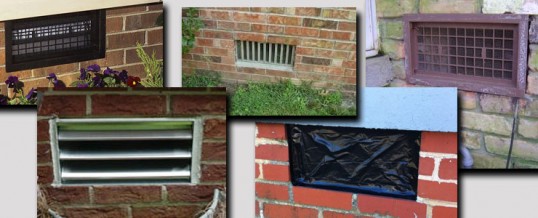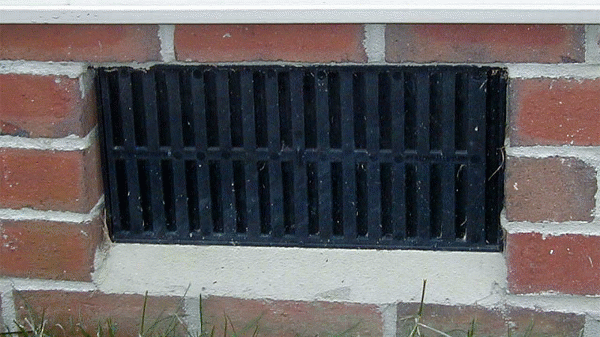
Crawl Space Vents Open or Closed?
It is that time a year once again. Heavy rains, followed by periods of excessive heat. Elevated relative humidity and dew point levels become common now all through the summer. It is the season of condensation problems inside Charlotte, NC crawlspaces. Homeowners are now faced with the unpleasant reality that something needs to be done to protect their investment. Crawlspace condensation problems can cause the development of mold and fungal colonies to manifest combined with structural wood rot and decay of the floor system. Floors cup, insulation begins to tag, and pests become more of a nuisance as they are attracted to the higher moisture content of the crawlspace. If you’re duct work is located inside the crawlspace, this phenomenon becomes amplified as your duct work acts as a refrigerator coil causing localized dew point reduction. Running your air conditioning unit excessively may exacerbate the condensation problems inside the crawlspace. Homeowners are faced the unpleasant reality of either spending money on an expensive crawlspace encapsulation, or modifying and/or regulating the existing crawlspace vents more efficiently using more creative and more cost efficient solutions. As crawlspace encapsulations can cost $15,000-$20,000 on a 2000 ft.² crawl space, the search for common sense alternatives becomes obvious.
Crawlspace Vents in Charlotte’s Climate
Many homeowners will ask me if they should keep their crawlspace vents open or closed, and at what times of the year to do so? There are many schools of thought on this regard depending on whom you speak with, and what part of the country your home is located. In Charlotte NC, the winters are generally mild with the occasional burst of cold air that lasts maybe a week or two each season. It is therefore advantageous for homeowners to open up their crawlspace vents in the winter to allow the cooler dryer air to passively infuse into the crawl space, flushing out all of the moisture that builds up during the summer months. If you see a period of excessive cold approaching, most of the vents can simply be closed until that weather pattern has passed. Spring and fall would be the most ideal times to have your vents open. During the summer, it is a completely different phenomenon. The opportunities for air exchange between June and September are less frequent and far between. Trying to guess when to open and close your vents during this time period becomes impossible for any homeowner. It is often at these times when homeowners invest in moisture control programs. It is important to understand that crawlspace moisture problems build up over time, and are the result poor air exchange over a long period of time. The build up of moisture into the crawlspace environment from the ground, and from passive air incursion from the crawlspace vents combines to increase the amount of condensation over time reaching its peak in August. If you are able to get control of this moisture release curve early enough, you can manage the hottest months without having to spend money on an expensive encapsulation.
Technology: Solving The Crawlspace Moisture Problem
One might also want to redefine the question. Instead of asking when it is appropriate to open and close the crawlspace vents, one might ask, “how can I engineer my crawlspace vents to work more effectively all year round?” Does that technology exist? The answer to this question is “yes”. There is unique technology available to force your existing crawlspace vents to work more effectively. The solution is called controlled ventilation. By introducing this innovative green technology to your crawlspace vents, you have the ability to solve crawlspace moisture problems as well as maintaining excellent air quality for the whole house envelope by utilizing this dew point controlled, engineered technology that transforms your crawlspace vents into what the builder intended. This technology is basically a synchronized weather station specifically designed for your crawlspace constantly calculating dew point levels with internal and external sensor packages combined with wood moisture sensors constantly sending data to the controller. If the air is too cold, too hot, or too moist, the controller senses that and the system will not use that outside air at that time. The dew point outside the house must be lower than the dew point inside the crawlspace for the system to use the outside air. In other words the system knows when it is dryer outside than it is under the house at all times to take advantage of that opportunity when it occurs. All of this being done with low voltage technology. If the house has severe drainage problems the system can be equipped with a dehumidifier back up system to operate supplementally if needed. This is very rare with most systems being designed without dehumidifiers. For more information about Atmox Controlled Ventilation Systems or a list of engineers, inspectors, hygienists, and other professionals that recommend the system call Michael at (704) 787-6972.
And remember. Don’t Encapsulate! Ventilate! We are here to help! Have a great summer!
ShareMAY

